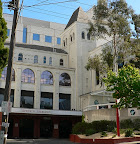
And now we return to normal programming. This is the last instalment of a series outlining the Australian Health Insurance industry from the perspective of a health provider.
7. Private Hospitals
Private hospitals get some money from the Governments but on the whole these are relatively small amounts compared to Public hospitals. They make their money by charging their patients. If a patient has no insurance then they have to pay out of their own pockets. If they have insurance then they can get the insurance company to pay the hospital, or the patient pays the hospital and gets the money back from the insurance company.
This only covers the costs of the beds, the food, the nursing staff, any equipment used during the patient's treatment and other care that is received at the hospital. Usually there is also a co-payment that the Insurance company charges the patient (often $50/day), though this depends on your level of cover and whether the hospital has an agreement with the insurance company.
A doctor who consults on a patient or performs an operation at a private hospital will charge the patient separately. This is again eligible for a Medicare payment, and the doctor is entitled to charge the patient more if he feels that it was worth more than the CMBS rate. The CMBS fee itself usually relates to the type of operation and how difficult the operation was (in general terms). Where possible, most surgeons will give the patient an estimate of the expected surgeon's fees and gap costs, but this will depend what exactly was done at the operation, since it is impossible to accurately predict what needs to be done until the patient is on the table, asleep, and the operation starts.
Furthermore, unexpected complications that arise still need treatment, and therefore patients and insurance companies will occasionally receive further invoices beyond what was originally planned. This is part and parcel of all medical care, and while insurance companies understand this often patients do not, unless this is clearly explained to them early on in the piece.
The components charged by a surgeon in a Private Hospital will usually consist of consultation fees related to visiting the patient in hospital (prior to any operations) and surgical fees related to the time and effort involved in each operation or procedure performed. These fees usually include a component referred to as "aftercare" - namely postoperative management of a patient for reasonable time and effort incurred after an operation that proceeds smoothly. Where complications arise or a more complex situation develops, further consultation fees may be raised, but Medicare requires some justification that such fees are "Not Normal Aftercare (NNAC)".
Beyond the physician or surgeon who admitted the patient, fees may be raised by other specialists who are involved in the patient's care, such as the Anaesthetist, a Surgical Assistant (usually a qualified doctor assisting the primary surgeon), Intensive Care Physicians, Radiologists, and other Specialists (e.g. General Physicians, Cardiologists, other Surgeons etc.). The overall costs can be quite high, but again in most cases Medicare covers the CMBS portion of the fees, and the patient will only be left with small gap fees to pay.
All in all, a typical patient being admitted for a hip operation will receive bills for:
- Hospital charges (Nursing care, meals, bed and equipment costs) - usually reimbursed or paid by the insurance company, co-payments paid by patient
- Implantable Prosthesis charges (e.g. a Moore's Prosthesis) - usually reimbursed or paid by the insurance company
- Surgeon's Preoperative Fees (CMBS portion paid by Medicare via insurance company, Gap fee paid by patient)
- Surgeon's Operative Fees (CMBS portion paid by Medicare via insurance company, Gap fee paid by patient) - usually includes aftercare
- Anaesthetist's Fees (CMBS portion paid by Medicare via insurance company, Gap fee paid by patient)
- Surgical Assistant's Fees (CMBS portion paid by Medicare via insurance company, Gap fee paid by patient)
- Other specialist's fees where necessary (CMBS portion paid by Medicare via insurance company, Gap fee paid by patient).
In cases where a patient has no private health insurance, they will find that most of the fees raised by doctors will be covered by Medicare, and the Gap Payments should be relatively small. The most expensive out-of-pocket costs are those billed by the hospital for facility costs and prostheses. Not uncommonly, the Gap Payments may only add up to several hundred dollars, while the Hospital and Prosthesis charges may be many thousands.
 |
| Not all private hospitals are new and flashy. |
- Public hospitals chase private patients
- Performance bonuses for veterans hospitals
- Abbott proposes private management of public hospitals
Hopefully this series of posts have been enlightening, and help to unravel the world of Australian Private Health Care. Basically, there is a lot of money shuffling around the system, oblivious to the patients who receive the end-product. The costs of health care are far greater than many people think, and the current health insurance and Medicare system have done an amazing job of blinding patients to the true cost and value of health care - making it something that we take for granted.
Obviously it has done wonders for the underlying health of our society - we have some of the highest standards of health care in the world, and it is readily available to the vast majority of Australian Citizens (with notable exceptions in the Indigenous population). It has kept health-care costs down quite successfully. But it has also led to the result where we do not appreciate the value (both financial and otherwise) of our own health.
Health Insurance companies are making vast amounts of money by "value-adding" to a Government-funded service. They present the costs of having your operation in a Private Hospital as being something they pay for, when in fact it is still largely paid for by the Government. They are working hard to further hide the true cost of doctors' fees from the public, to make the Gap Fee an exception rather than the rule. And they are being very successful.
This is the end of this series of posts. I hope you enjoyed it.





No comments:
Post a Comment